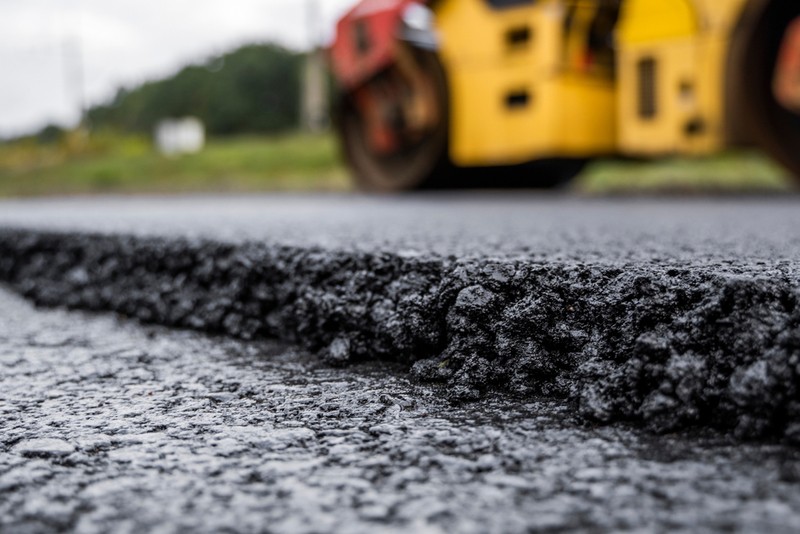Elevate Safety And Security and Appeal: Angled Parking Area Solutions with Asphalt Sealing
Elevate Safety And Security and Appeal: Angled Parking Area Solutions with Asphalt Sealing
Blog Article
Hot Mix Asphalt: A Sustainable Remedy for Sidewalk
Hot Mix Asphalt (HMA) has actually emerged as a leading lasting selection for sidewalk solutions, supplying a myriad of cutting-edge innovations and ecological benefits. As the need for green construction methods expands, exploring the nuances of HMA's sustainability can give important understandings into the future of pavement remedies.
Ecological Advantages of Hot Mix Asphalt
.png)
Additionally, Hot Mix Asphalt aids to minimize metropolitan warm island results. Its dark color absorbs sunlight, lowering the amount of warm mirrored back into the environment compared to lighter-colored sidewalks. This can lower ambient temperature levels in city areas, decreasing the need for air conditioning and inevitably decreasing energy consumption.
In enhancement, Hot Mix Asphalt contributes to enhanced stormwater monitoring. Its permeable nature permits water to recharge and infiltrate the pavement groundwater materials, decreasing overflow and the risk of flooding. These ecological benefits make Hot Mix Asphalt a sustainable option for paving freeways and roadways.
Energy Performance in HMA Manufacturing
Is power effectiveness a crucial variable in the manufacturing of Hot Mix Asphalt (HMA)? Energy plays a substantial function in the production of HMA, influencing both cost and environmental sustainability. One key facet of power efficiency in HMA production is the usage of cozy mix asphalt (WMA) technologies.
Furthermore, advancements in plant modern technologies have led to even more energy-efficient HMA manufacturing procedures. By optimizing power use in HMA manufacturing, the market can decrease its carbon impact while maintaining high-grade pavement materials.
Recyclability of Warm Mix Asphalt
The recyclability of Hot Mix Asphalt (HMA) is an essential aspect of its sustainability and long-term environmental effect. HMA is one of the most recycled products in the United States, with over 100 million lots of reclaimed asphalt pavement (RAP) being reused each year in new pavement construction. Reusing HMA supplies several environmental benefits, such as minimizing the requirement for virgin products, decreasing energy consumption throughout manufacturing, and lowering the amount of waste sent out to garbage dumps.
The process of reusing HMA includes crushing the existing pavement, squashing it right into smaller pieces, and blending it with brand-new accumulation and asphalt binder to produce a recycled mix. This recycled mix can usually do along with and even far better than traditional HMA, while calling for less basic materials and generating reduced greenhouse gas exhausts. By incorporating RAP right into new sidewalk jobs, roadway companies can save natural deposits, lower expenses, and reduce the environmental impact of roadway building and upkeep activities. Overall, the recyclability of HMA plays a considerable role in promoting lasting practices within the pavement market.

Long-Term Efficiency of HMA
Asphalt pavements show longevity and resilience over a prolonged period, reflecting the long-term performance of Hot Mix Asphalt (HMA) The long life of HMA can be associated to its ability to withstand rush hour lots, rough weather, and the effects of aging. Studies have actually revealed that properly designed and correctly built HMA pavements can last for two decades or more with routine upkeep. The trick to making the most of the long-term performance of HMA hinges on utilizing top notch products, complying with finest methods in building, and executing efficient maintenance techniques. Appropriate water drainage, Look At This regular assessments, and prompt fixings are important for protecting the structural honesty of HMA pavements over time. In addition, developments in HMA technology, such as making use of polymer-modified binders and warm mix asphalt, have better boosted the toughness dig this and longevity of HMA pavements. By focusing on quality building and construction and maintenance methods, HMA remains to verify itself as a sustainable and cost-efficient option for long-lasting pavement facilities.

HMA: Resilience and Sustainability
Demonstrating both resilience and sustainability, Warm Mix Asphalt (HMA) has actually become a cornerstone in the building of lasting pavement facilities - regrading. HMA's toughness stems from its capacity to hold up against hefty lots, hop over to these guys harsh climate condition, and high website traffic quantities, making it a trustworthy option for highways, highways, and airport paths. The structure of HMA, which generally consists of aggregates, binder, and filler, plays a critical function in boosting its durability and resistance to tear and use
Additionally, HMA's sustainability lies in its recyclability and energy-efficient production procedure. The capability to reuse recovered asphalt pavement (RAP) in new HMA mixes decreases the demand for virgin materials and decreases the environmental influence of pavement building and upkeep. Additionally, the power effectiveness of creating HMA exists in its lower blending temperature levels compared to various other pavement materials, resulting in lowered power consumption and greenhouse gas discharges.
Final Thought
In conclusion, hot mix asphalt (HMA) supplies a sustainable service for sidewalk with its ecologically friendly attributes. HMA's recyclability, power performance in manufacturing, and lasting resilience make it an environment-friendly option for roadway building and construction.
HMA is one of the most recycled materials in the United States, with over 100 million bunches of reclaimed asphalt sidewalk (RAP) being reused each year in brand-new sidewalk building and construction.The procedure of reusing HMA includes milling the existing sidewalk, crushing it into smaller sized pieces, and mixing it with new accumulation and asphalt binder to produce a recycled mix.Asphalt pavements show sturdiness and strength over an extended period, reflecting the long-lasting efficiency of Warm Mix Asphalt (HMA) Furthermore, advancements in HMA modern technology, such as the usage of polymer-modified binders and warm mix asphalt, have further improved the durability and durability of HMA sidewalks. The capacity to recycle recovered asphalt sidewalk (RAP) in new HMA mixtures reduces the demand for virgin materials and decreases the ecological impact of pavement building and construction and maintenance.
Report this page